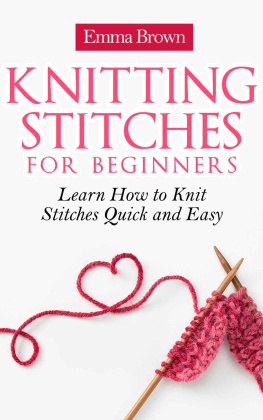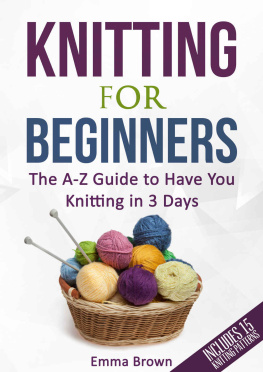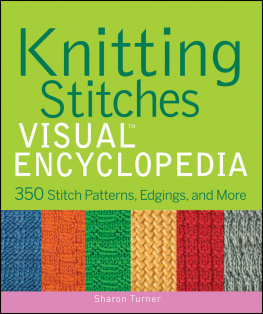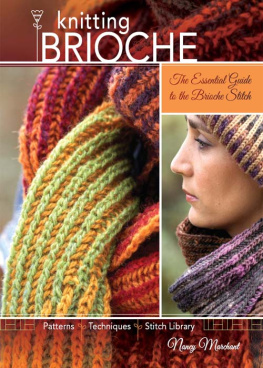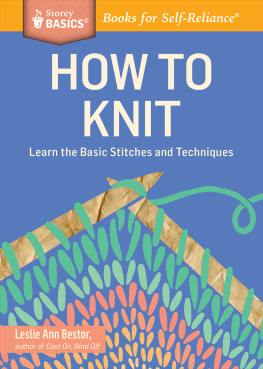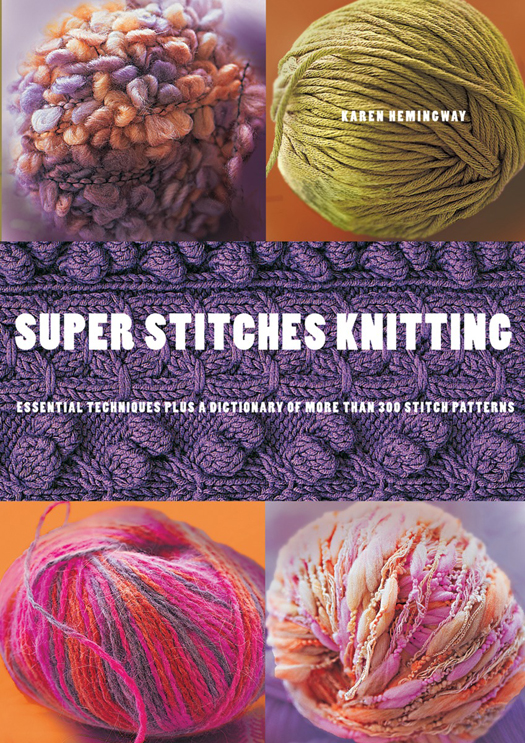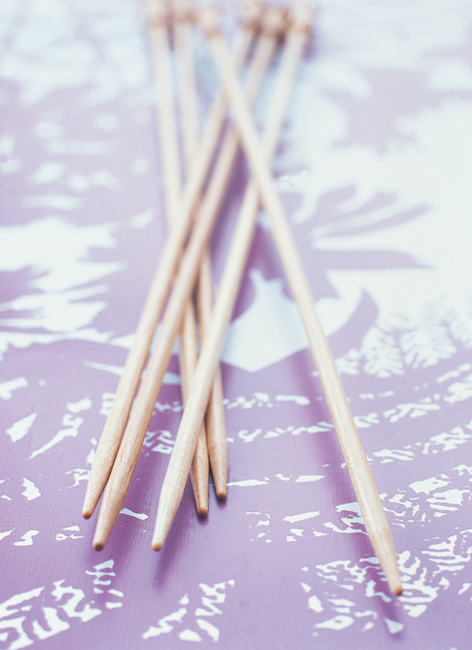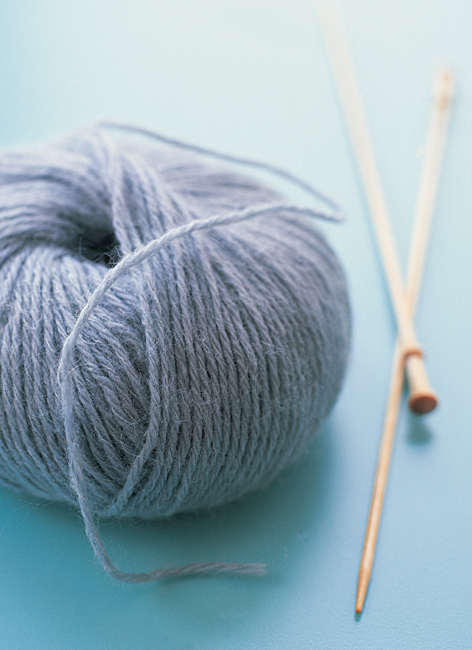Art Editor: Sarah Rock
Photography: Deirdre Rooney
Illustration: Stephen Pollitt
Knitters: Lisa Allan, Karen Hemingway, Ruth Hereward-Isaac, Pauline Hornsby Note: see www.cobweb.net/~knitting/lefties for a reworking of abbreviations for left-handed knitters.
Copyright 2007 by Marabout, Paris All rights reserved. Published in the United States by Potter Craft an imprint of the Crown Publishing Group, a division of Random House LLC, a Penguin Random House Company, New York.
www.pottercraft.com
www.crownpublishing.com POTTER CRAFT and colophon are registered trademarks of Random House LLC Originally published in the United States by Watson-Guptill, a division of Random House LLC, New York, in 2007. eBook ISBN: 978-0-553-41914-6 Library of Congress Control Number: 2007926725 First eBook Edition v3.1
Contents
HOW TO USE THIS BOOK
Knitting is one of those simple pleasures in lifeits easy to learn, relaxing to do, and is so convenient to pick up at any time. And you can produce gorgeous results with only a couple of stitches and a pair of needles. If you enjoy more of a challenge, there are thousands of stitches to explore, developed by creative fingers and passed on by generations of knitters. The most well-known, and many others, are gathered together in this collection for you to use in your own knitting and to share with friends.
Getting started The book is divided into 12 main chapters. deals with all the know-how you need to start knitting. Beginning with the yarns and equipment, it moves on from how to control the yarn, to knitting and purling, to working with color, correcting mistakes, and finishing your knitted fabric. The abbreviations in knitting instructions might be confusing when you begin to knit, but they will quickly become second nature. Any special abbreviations you need for a particular stitch are given in the written instructions, and the commonly used ones are . Discovering stitches Each of the other chapters is dedicated to a stitch family, loosely based on technique.
For each technique, written instructions, and/or charts follow a photograph of the knitted sample(s), so that you can see how the instructions relate to the finished piece. Knit and purl patterns are just thateasy patterns made with simple knits and purls. Using the same stitches but in panels, the next chapter draws on patterns that often feature in the traditional British seamens ganseys. Basic, functional ribs head the lineup in the Ribs chapter, which also presents a surprising variety of attractive alternatives. Textured stitches will develop your skills by introducing twists, crossed stitches, and other techniques to create distinctive textures. Edgings offers a choice of neat hems, delicate lace, and flamboyant frills.
The last five chapters give you more chances to exercise your skills. If youre addicted to texture, try the bobbles and clusters, smocking and loops in Ornamental stitches. Eyelet patterns introduces simple but charming lacy ideas. Next there is a wealth of cables to choose fromto combine on an Aran pullover or simply jazz up plainer knitting. Delicate and intriguing lacy patterns follow. Color streams into the next chapter, which shows how the slip stitch cleverly combines colors to create fascinating effects.
And finally, a beautiful collection of Fair Isle patterns will inspire you to blend subtle shades or cool colors to your hearts content. Enjoying the book You can use this book in a number of ways, depending on your level of expertise: to look up a particular stitch, go to the index, which will will link you to the relevant instructions to select a stitch for a particular project, flip through the relevant chapter until you find a stitch you like if you are just beginning to knit, start with Knitting basics and then follow the instructions for some of the simpler stitches, perhaps in Knit and purl patterns or, of course, you can simply pop the book in your pocket or knitting bag and browse through the stitches for inspiration or share them with other knitters. Left-handed knitters Knitting is a two-handed skill, and many left-handers find that they can knit very easily in the right-handed way. If you do experience problems, www.cobweb.net/~knitting/lefties gives a reworking of common abbreviations especially for left-handed knitters.
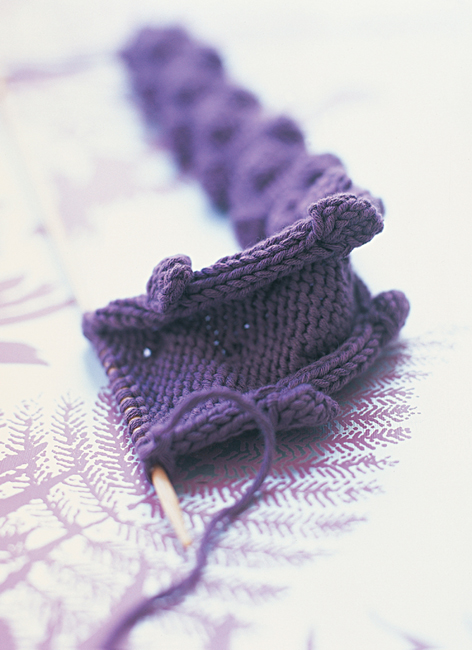
Knitting basics
This section tells you about the tools you need and the gorgeous yarns you can choose for knitting.
NEEDLES AND OTHER TOOLS
You need just two tools to knit witha pair of knitting needlesso you can knit anytime, anywhere.
NEEDLES AND OTHER TOOLS
You need just two tools to knit witha pair of knitting needlesso you can knit anytime, anywhere.
Your collection will grow steadily as you do more knitting, and you will probably want to acquire a few special needles. With a few general sewing tools, youre ready to go .
STRAIGHT NEEDLES
These are available in a wide range of sizes, from 0 (2 mm) to 15 (10 mm) and larger, to suit all yarns. The size to suit a particular yarn is usually given on the label. Two lengths are widely available10 inches (25 cm) and 14 inches (36 cm). You can choose from needles made of metal, plastic, wood, or bamboo, depending on the feel you prefer.
If you are using a metric or UK pattern, you will see a different sizing system; the equivalents of the metric and UK sizes are listed .
DOUBLE-POINTED NEEDLES
These needles come in sets of four, or five for thin needles, so that you can knit with one needle and divide the stitches equally among the others. This allows you to knit in the roundcircular knitting, which means the right side is always facing you and there are no side seams to sew up. Double-pointed needles are essential for circular knitting on a small number of stitches.
CIRCULAR NEEDLES
Circular needles are also very useful for circular knitting. Two short needles are joined by flexible nylon cord and are available in lengths from 16 inches (40 cm) to 48 inches (122 cm).
Each length requires a minimum number of stitches to avoid overly stretching the knitting. Some knitters prefer to cast on using straight needles and transfer the stitches before knitting the first row. Always make sure that the cast-on stitches are not twisted before knitting the first row, as they cannot be untwisted later. Move a stitch marker up the rows before the first stitch on each round to keep track of where you are in the pattern.
CABLE NEEDLES
These short, double-pointed needles come in a range of sizes and help to transfer cabled stitches without dropping them.
OTHER TOOLS
There are a few other handy, though not essential, tools for knitting.



